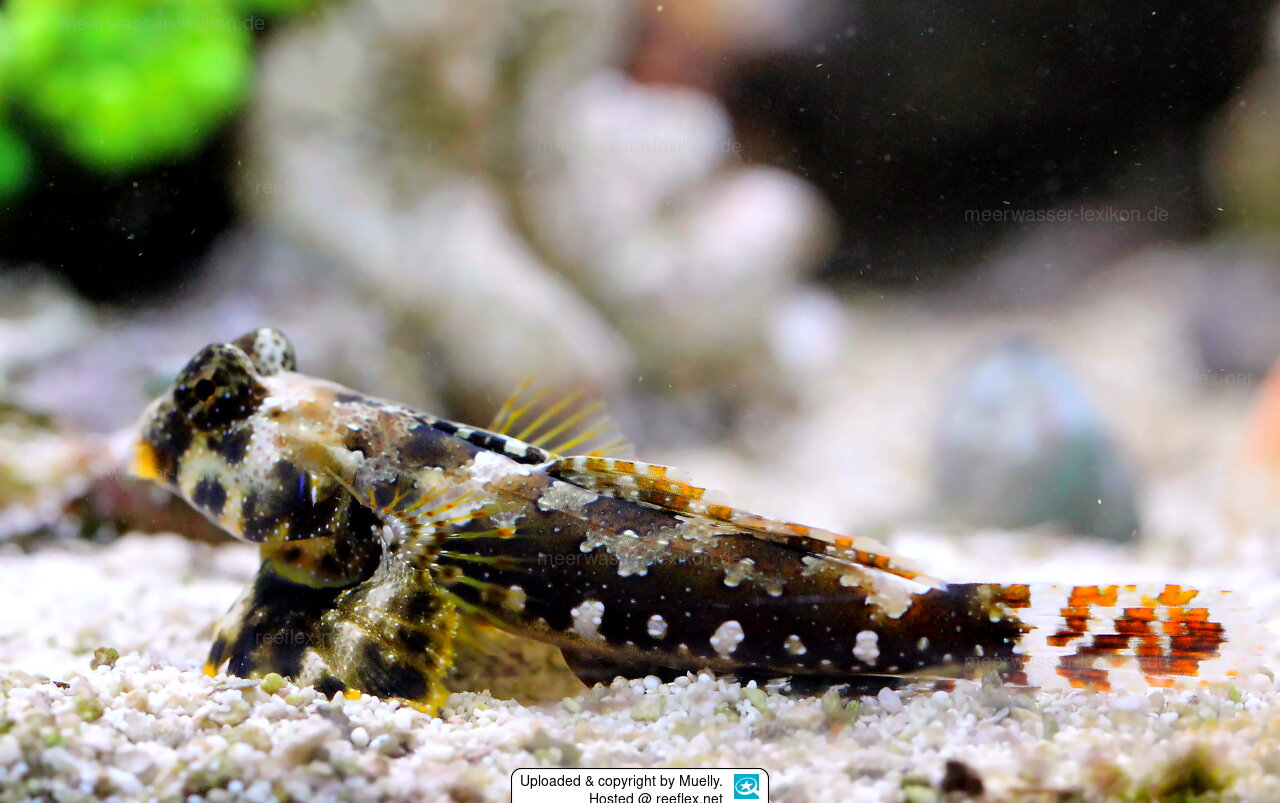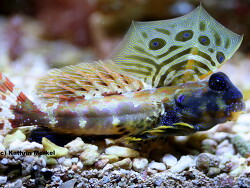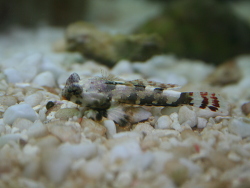Info
Lyrefish do not float or swim like other fish, but move slowly gliding along with the help of their pelvic fins and they are not at all sensitive to disease.
Pool requirement.
The tank volume specified above is less relevant. What is important is that there is enough or suitable food in the tank, because they have to eat constantly and survive without supplementary feeding in well-worn tanks with several months of standing time and correspondingly well-developed microfauna. During this time, they feed on micro-animals found in the substrate and on the stones. There must be enough bottom surface for successful maintenance.
Furthermore, food competitors are also important (e.g. pipefish, small wrasses, etc. or by keeping them in pairs), which chase the limited live food on the substrate. It is also advantageous to keep a small copepod farm (several boxes) in the beginning. After switching to frozen food, live food breeding can be discontinued.
Live benethic (bottom-living) copepods - Tigriopus californicus or Tisbe biminiensis - can always be added if available.
Unfortunately, there is no guarantee that the switch from live food to frozen food will be successful. In this case, extensive live food breeding is necessary for our fish to survive in the aquarium.
Feeding intake.
The fish take a long time to eat at the beginning, before the food is taken up, a close inspection is carried out. After acclimatisation, the offered frozen food is eaten without problems. It should be noted that wild-caught fish behave differently than offspring when it comes to food intake. In the case of offspring, the size of the fish purchased also plays a role in the choice of food. At least with offspring it is guaranteed that replacement food is usually known and accepted immediately. Several small frozen foods should be available, possibly also pellet food.
The supply of offspring is currently still very small and the price for a 2 - 3 cm fish is 70.00 to 90.00 Euros (as of 05/2023).
Sex and mating.
Sex is very easy to distinguish in lyrefish, male fish have a longer first dorsal fin and are larger than females. Two males cannot be kept in the same aquarium, it will be a fight to the death and only the fittest will survive. A group of one male with several females is possible if the tank is large enough.
Keeping them in pairs should be aimed for.
Observing the courtship or spawning behaviour in twilight is very interesting.
Breeding information.
A pair will mate on average every 3 days and depending on the size of the parents as well as the species, the amount of eggs will be 100 - 2,000 eggs, e.g. in very large Synchiropus stellatus females up to 2,000. The released egg strands can be collected at the water surface. If kept in groups of 2-3 males and 5-9 females in very large tanks, daily egg laying can be expected.
Very small larvae, about 1 mm in size, develop from the eggs within 16 hours. Until the 3rd day the fish larvae feed on the yolk sac, after that suitable food is necessary. In stellatus, pelagic (free-floating) copepod nauplii below 100 µm are necessary, in splendidus copepods between 100 and 150 µm can lead to success. The small copepod phase is 2 to 4 days.
The following copepods are recommended: Nitokra lacustris, Acartia (Acanthacartia) tonsa.
After that, larger copepods can be fed. From the 10th day onwards, enriched Artemia euplii 400 - 500 µm can also be fed. As soon as the fish larvae change from the pelagic life phase to the benethic life phase, the live food must also be changed.
Nauplii of Tigriopus californicus or Tisbe biminiensis, no adult copepods, these can attack or damage the larvae at night or in the worst case kill them due to the aggressiveness and number of copepods.
The sex is fixed from birth and causes problems from a size of about 2 cm, because then the first aggressive males appear.
Synonyme:
Callionymus microps Günther, 1877
Callionymus ocellatus Pallas, 1770
Callionymus punctulatus Lacepède, 1800
Synchiropus lili Jordan & Seale, 1906
Synchiropus ocellatus (Pallas, 1770)
Synchiropus rhodonotus Fowler, 1946
Synchiropus shoe Okada & Ikeda, 1937







 Muelly
Muelly















